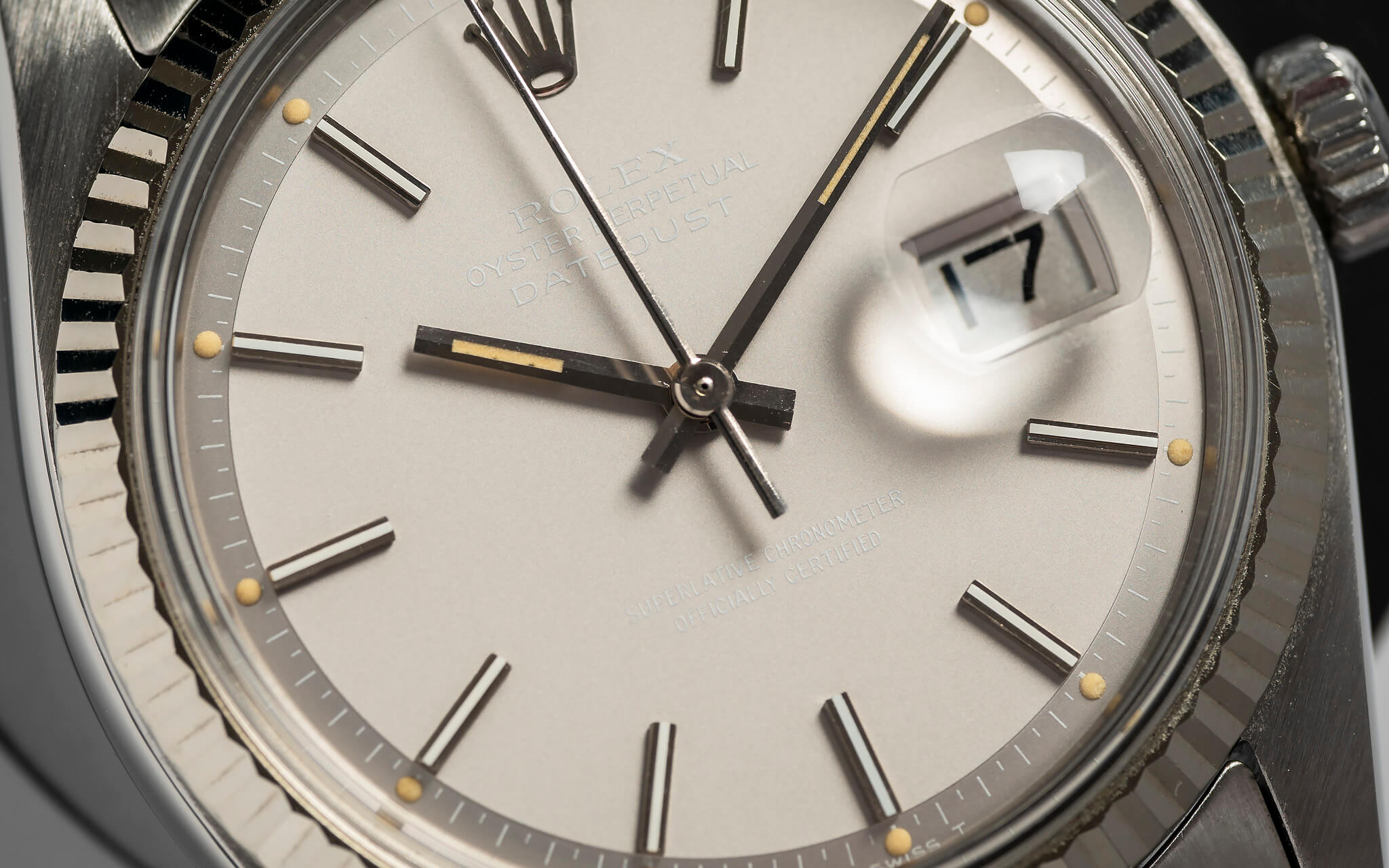What Is A Ghost Dial, And What Makes Them So Cool?

Over the years, Rolex’s approach to selecting the printing color on the dials has been pretty straightforward and aimed at maximum contrast. This is why they use, for example, white printing on the dials of Submariners and Sea-Dwellers, and black on gold dialed Day-Dates. However, in some cases, Rolex decided differently. In particular in the 1970s, there were a few occasions in which they did things differently with certain color dials.

A good example is this reference 1601 Datejust from 1973. Here Rolex used white printing on a most likely silver-colored dial. As time passed, the dial color faded to the point that the white printing became (nearly) invisible under certain angles. This effect is what we call a ‘ghost dial.’ With this reference 1601, the result is truly spectacular as it almost seems like the dial is stripped of all color, but as the printing is relatively thick, the crisp letters jump at you from certain angles.

The same is the case with this beautiful reference 1803 Day-Date. Between roughly 1974 and 1976, Rolex offered the Day-Date with a Havanna brown dial. This color differed very subtly from the traditional gold dials on this model. What is unique is that Rolex also opted for white printing. While the ghost effect is less prominent than on the reference 1601 Datejust, it still creates a striking effect.

Light dramatically influences whether you can see the printing or not, making owning one of these watches a great joy. It also introduces an additional feature that makes wearing them a more vibrant affair. The downside, or upside if you own one, is that they are relatively rare. Rolex only used a less contrasting printing color on certain dials, which were not produced in vast numbers. This makes ‘catching a ghost’ a rare affair.